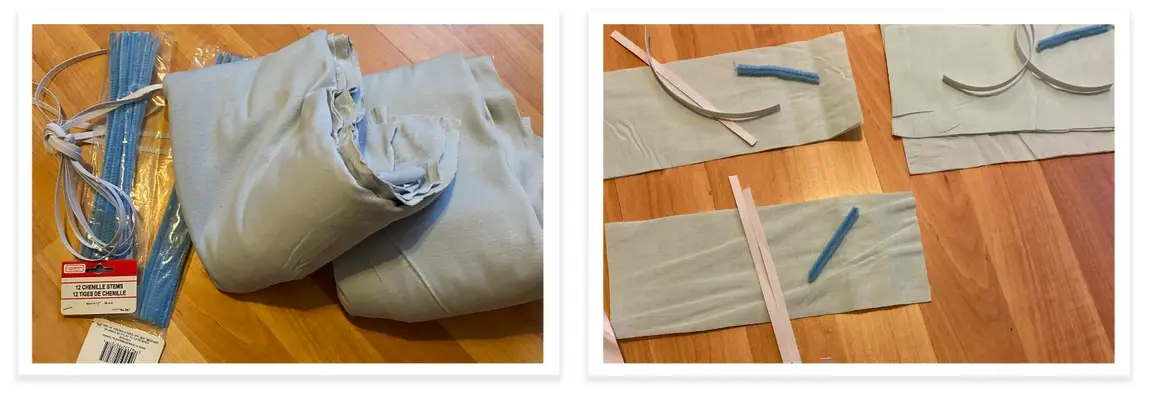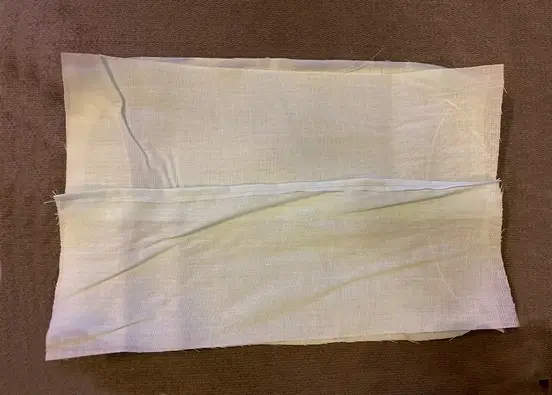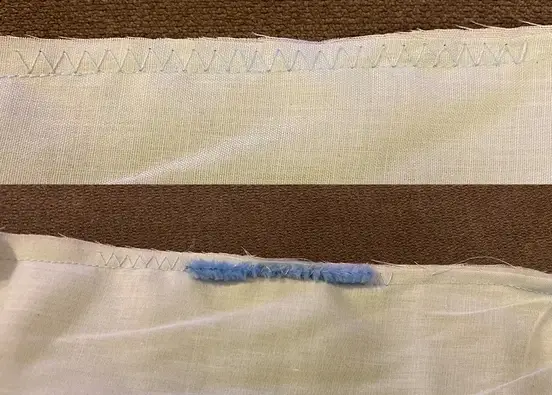How to Make Face Masks During the COVID-19 Pandemic

Like so many of us, Veronica Morales was feeling anxious. An NYC-based fashion designer, she’d been busy working from home, practicing social distancing, and keeping up to date on the news—but she wanted to do more. That’s when she came across reports of face mask shortages for New York City medical workers.
“I thought, ‘I can make those!’” she says. “Usually during a crisis my particular skills don't come in handy, but this time they do!”
Veronica did some preliminary research, looked up patterns, and read (and reread) articles detailing the best materials for homemade face masks. “I combined a bunch of the different tutorials I saw to design a mask that I could make easily but would also keep medical professionals safe,” she says.
Soon after she purchased supplies, Veronica got to work.

How to craft medical face masks
Materials:
- 100% cotton woven fabric (vacuum cleaner bags, 100% cotton sheets or pillowcases also work) cut into 4 pieces per mask: Two 6x9” pieces, and two 4x9” pieces
- Pipe cleaners, one 3” piece per mask
- Elastic bands (ponytail bands or large rubber bands also work), two 6” strips per mask
Before getting started, remember that these masks are most critically needed by medical professionals and essential workers. They are on the front lines and need the protection, whereas we should be staying home as much as possible. However, it is a good idea to have a mask for yourself if you're going out for groceries or for other necessary errands.
When crafting, it's important to remember to keep your materials and work area as hygienic as possible. If you’re making your masks out of household items like pillowcases or t-shirts, be sure they’re clean and free of stains. Wash your hands regularly before and throughout the process, and store your completed masks in a clean space, such as a Ziploc bag, before donating.

Step 1
- Place one 6x9” piece on top of the other, then stitch the elastic to the short ends, about 1/4” from each side.
- These are major stress points, so make sure to back tack each end of the elastic to prevent them from tearing off during use.

Step 2
- Stitch a 1/4” hem on one long side of each 4x9” piece.
- Place the two 4x9" pieces on top of the 6x9" piece, covering the elastic bands, with the hemmed edges overlapping in the middle.

Step 3
- Stitch it all together with 1/4" stitch around the perimeter of the mask. The hemmed edges in the middle will remain open, creating an inner pocket for an additional filter.
- Add a zigzag stitch across the center of one long side of the mask.
- Carefully slide the pipe cleaner under the zigzag stitch to secure it in place. This will help the mask rest snugly on the wearer’s nose.

Step 4
- Flip the mask inside-out. The elastic bands should now be loops coming out the sides.
- Fold the front of the mask to create two 1/4” pleats. Sew them in place with stitches 1/4” away from the short edges of each fold.
Veronica’s last step is to steam the masks to help keep the pleats in place, and also as a light form of sterilization before packing them up to donate.
“These are meant to be disposable, single-use masks,” she says, “so don’t worry too much about them being perfect.” Given the current need for face masks across the country, quantity beats quality.

Doing good while staying home
After completing a few test masks, Veronica tapped into her network to figure out where they would be most needed. She found her first grateful recipient in her friend Renee Clemente, a nurse at NewYork-Presbyterian/Columbia University Medical Center, who said she’d happily accept as many masks as Veronica could make.
Veronica mailed a set of twelve masks to Renee the next morning and plans to spend her non-work hours crafting as many as she can. “These doctors and nurses are saving our lives,” Veronica says. “They're out there doing all the work that we can't do, putting themselves at risk to keep us all safe.”
“This is a small thing I can do,” she adds, “but it matters.”
***
Are you looking for masks or other personal protective equipment for yourself? Have some to donate? Here's how to get and give personal protective equipment.
Angel uses his skills as a storyteller to support and inspire job seekers and aspiring social-impact professionals.


